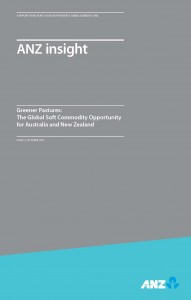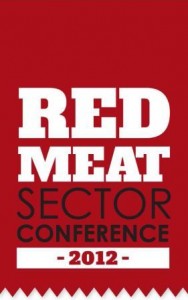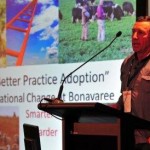 A proposal for a new Agri-Food Board is centre of a comprehensive new strategy aimed at tripling the value of exports for the agri-food sector to about $60 billion.
A proposal for a new Agri-Food Board is centre of a comprehensive new strategy aimed at tripling the value of exports for the agri-food sector to about $60 billion.
The Riddet Institute, a national centre of research excellence focusing on food, digestive physiology and nutrition, issued a ‘Call to Arms’ yesterday through the launch of its independent report on the future of New Zealand’s agri-food sector. The report calls for a joint approach from industry and government to drive the activities needed to treble the value of exports in the sector by 2025, as suggested in the Government’s Economic Growth Agenda in 2009.
The report contains options on how sector leaders can work together and why the agri-food industry should lead the strategy implementation work.
It was commissioned by the Riddet Institute and developed by an independent ‘thought leadership’ team led by Dr Kevin Marshall, former chief executive of the Dairy Research Institute, and prepared in response to a call by industry senior executives, who challenged the Institute in 2010 at its annual summit to develop a strategy for science and education-led economic advancement of the New Zealand food industry.
 Dr Marshall said: “Our strategies are neither new nor unique, but, in the past, implementation by industry has failed. Crucially, we have provided a pathway and a proposed mechanism for action that will work. There is urgency now because New Zealand faces a mediocre economic future if we don’t drive the major recommendations in this report to fruition.
Dr Marshall said: “Our strategies are neither new nor unique, but, in the past, implementation by industry has failed. Crucially, we have provided a pathway and a proposed mechanism for action that will work. There is urgency now because New Zealand faces a mediocre economic future if we don’t drive the major recommendations in this report to fruition.
“Agri-food leaders need to know what to do, how to do it and how to develop the resources they need to do it effectively.”
Welcomed by the Minister
 Minister for Primary Industries David Carter welcomed the report, which he said was a vital contribution.
Minister for Primary Industries David Carter welcomed the report, which he said was a vital contribution.
“The Strategy Report highlights that if we are to achieve the standard of living we aspire to by 2025, we must treble the real value of our food exports to about $60 billion,” the Minister said, adding that to achieve a target of real compound growth rate of seven percent over the next 13 years, New Zealand needs to close a gap of current progress of around three percent.
“While the agri-food sectors have been successful, we need to grow faster. To realise growth, we need to collaborate, be innovative, build on our strengths and continue to earn our reputation for safe, high quality food, produced in a sustainable manner.”
New Zealand is lucky to have repositioned itself away from traditional markets, which are currently facing problems, towards Asia. “In the past financial year, exports to China have jumped by nearly 40 percent,” he said.
The Strategy
The task at hand “will not be achieved with business as usual,” Marshall explained.
He outlined the four transformational strategies proposed in the report are to:
- Selectively and profitably increase the quantities and sales of the current range of agri-food products.
- Profitably produce and market, new, innovative, high value food and beverage products.
- Develop value chains that enhance the integrity, value and delivery of New Zealand products and increase profits to producers, processors and exporters, and
- Become world leaders in sustainability and product integrity.
Four ‘enablers’ back the strategies. These include the development of transformational industry and Government leadership, strong consumer-driven export marketing of branded and consumer and ingredient product, increasing the capability and skills of the agri-food industry and supporting industries and increasing the amount and effectiveness of investment in innovation, research, development and extension supporting the agri-food industry.
He said the think-tank determined that current food industry strategies have not been achieved as they “depended too much on government taking the lead” and that the “captains of industry have not stepped up to take the leadership role.”
For that reason, the most important proposal is to establish an Agri-Food Board “to be the focal point for sector leaders to work together and for industry to lead the work with Government, overcoming barriers to implementation.”
Elements of the strategy link in with thoughts in KPMG’s Agribusiness Agenda for 2012, ‘People Unlocking the Future’ ably presented at the launch Ben van Delden. It also reinforces what the meat industry is already doing with the Red Meat Sector Strategy, B+LNZ Ltd chairman Mike Petersen said.
Strategic echoes include opening access to markets, together with the sector becoming more consumer-driven and collaborative. Discussion also worked its way around the need to attract, develop and retain new graduates and workers for the agri-food sector, the need to develop leadership within the industry and for behaviour and attitude change.
Over 120 attended the launch in Wellington that was attended by the Minister, agri-food industry leaders and senior government officials. Also speaking was NZ Merino’s John Brackenridge. The report will be on the agenda at the forthcoming Primary Industry Chief Executives’ Boot Camp in August at Stanford University, California.
Meat industry leaders, including Keith Cooper of Silver Fern Farms, Sir Graeme Harrison of ANZCO Foods, Sam Robinson of AgResearch, were amongst those who had contributed to the report.
The report is well worth a read to see where the sector’s going. Download a pdf copy of A Call to Arms: A Contribution to New Zealand Agri-Food Strategy or ask for a hard copy by emailing [email protected].
 Leading meat processor and exporter Alliance Group is now supplying Pure South beef, venison and lamb to a restaurant in Singapore’s iconic waterfront precinct.
Leading meat processor and exporter Alliance Group is now supplying Pure South beef, venison and lamb to a restaurant in Singapore’s iconic waterfront precinct.


















